Introduction to Two Often Confused Conditions
Obsessive-Compulsive Disorder (OCD) and Autism Spectrum Disorder (ASD) share several behavioral traits, such as repetitive actions and social challenges, which frequently lead to misdiagnosis. Understanding their distinct neurobiological, behavioral, and therapeutic differences is vital for accurate diagnosis and effective treatment. This article explores the nuances between OCD and autism, clarifying their differences and similarities, the genetic and neurological overlaps, and the best approaches to therapy.
Foundations: Defining OCD and Autism
What are the definitions of OCD and ASD?
Obsessive-Compulsive Disorder (OCD) is a mental health condition marked by uncontrollable, recurring thoughts (obsessions) and behaviors (compulsions) that the individual feels compelled to perform to reduce anxiety.
Autism Spectrum Disorder (ASD) is a developmental and neurological disorder that affects social interaction, communication, and behavior patterns, often manifesting as repetitive behaviors or restricted interests.
What differentiates autism spectrum disorder from OCD in terms of underlying causes?
ASD and OCD differ fundamentally in their origins: ASD is a developmental brain disorder present from early childhood involving neurological and genetic factors. OCD is primarily a mental health disorder characterized by anxiety-driven obsessions and compulsions. This distinction highlights that ASD stems from early neurodevelopmental differences, whereas OCD results from anxious thoughts causing repetitive behaviors.
When do symptoms of OCD and ASD typically appear?
ASD symptoms typically emerge in early childhood, often noticeable by age 2 through developmental and behavioral assessments focusing on communication and social skills.
OCD usually appears later, most commonly in late childhood or adolescence, centering on the onset of intrusive thoughts and compulsive rituals linked to managing anxiety.
Understanding these definitions, causes, and onset patterns assists in accurate diagnosis and tailored treatment for affected individuals.
Symptom Overlap and Diagnostic Challenges
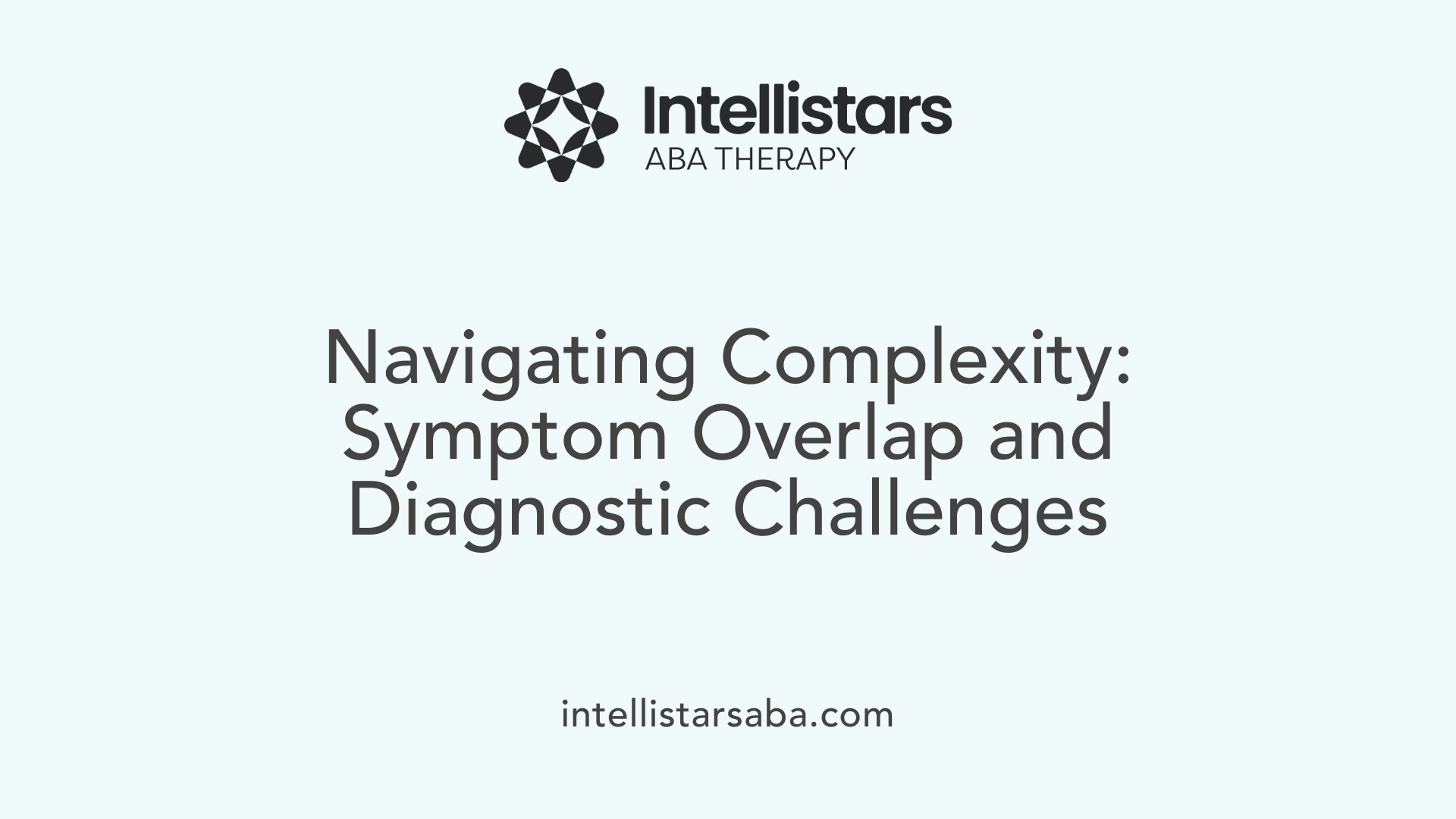
Common Behaviors in OCD and Autism
Both obsessive-compulsive disorder (OCD) and autism spectrum disorder (ASD) exhibit repetitive behaviors and rituals. Individuals with OCD typically perform compulsions, such as washing or ordering, aimed at reducing anxiety or distress. Conversely, autistic individuals often engage in stimming behaviors—like hand flapping or rocking—that serve as self-soothing and sensory regulation. These repetitive behaviors, alongside difficulties in social interaction, produce behavioral similarities between the two conditions.
Intrusive Thoughts Versus Focused Interests
A notable behavior in both disorders is the presence of intrusive or obsessive thoughts. In OCD, these obsessions often involve fears such as contamination or harm, and the compulsions are responses intended to alleviate such anxieties. Autism-related intrusive thoughts, however, often manifest as intense focus or hyperfocus on specific interests or topics. These perseverative interests can interfere with social interactions but are less tied to fear or anxiety compared to OCD obsessions.
Social Interaction Difficulties
Both conditions affect social functioning, but for different reasons. Autism-related social challenges arise from difficulties reading social cues and a preference for sameness due to intolerance of uncertainty. In contrast, OCD-related social difficulties often stem from anxiety and compulsive behaviors that interfere with normal social engagement. These differences shed light on the distinct underlying causes despite surface similarities.
Diagnostic Confusion and Misdiagnosis Rates
Due to overlapping symptoms such as repetitive behaviors, intrusive thoughts, and social difficulties, OCD and autism can be misdiagnosed or conflated, especially in youth. Studies indicate that approximately 25% of young people with OCD also meet diagnostic criteria for ASD, and 6–36% of autistic individuals have comorbid OCD symptoms. This overlap complicates diagnosis. Standardized screening tools and thorough evaluations are essential to differentiate the two, ensuring that each individual receives tailored interventions appropriate to their diagnosis.
Repetitive Behaviors: Differing Motivations and Functions
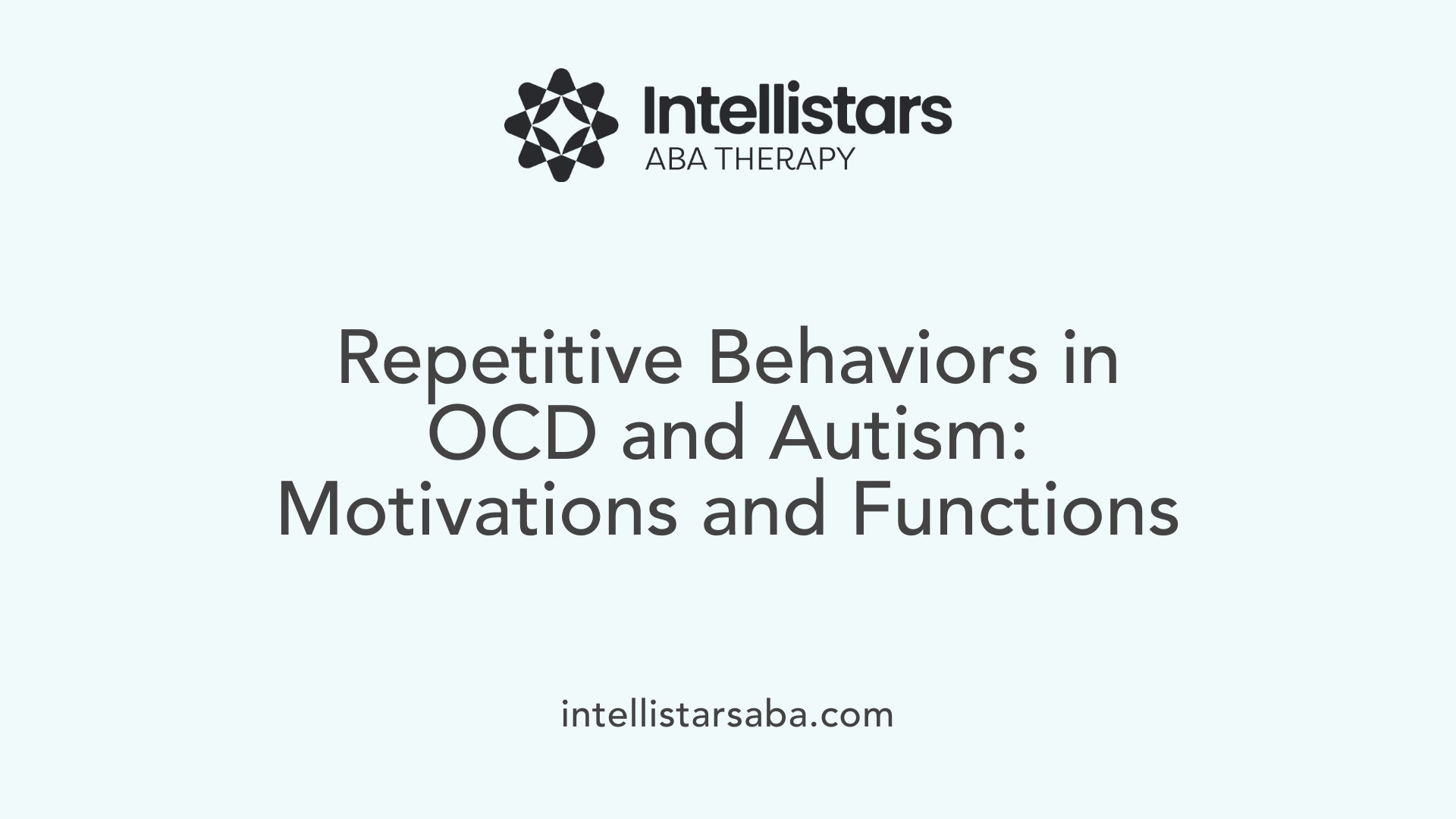
Nature of repetitive behaviors in OCD and ASD
Repetitive behaviors are hallmark features of both obsessive-compulsive disorder (OCD) and autism spectrum disorder (ASD), yet their underlying motivations and functions vary significantly. In OCD, such behaviors—called compulsions—are typically anxiety-driven responses to intrusive fears and obsessions. Conversely, in ASD, repetitive behaviors often manifest as stimming, which may provide sensory regulation or self-soothing benefits.
Stimming versus compulsions
Individuals with ASD often engage in stimming behaviors like hand flapping or rocking to gain sensory input or calm themselves. These behaviors are usually pleasurable or comforting. In contrast, compulsions in OCD, such as repetitive hand washing or ordering, are performed to alleviate distress or prevent feared outcomes, representing attempts to control anxiety.
Anxiety-driven versus self-soothing behaviors
While OCD compulsions are fundamentally aimed at reducing anxiety caused by intrusive thoughts, ASD repetitive behaviors serve more to manage sensory sensitivities and maintain emotional equilibrium. This distinction is critical when assessing and treating these behaviors.
Intolerance of uncertainty and rituals
Both disorders share an intolerance of uncertainty leading to repetitive actions; individuals with ASD seek sameness and predictability, while those with OCD perform compulsions to reduce doubts and distressing intrusive thoughts. Understanding this difference is important in tailoring therapeutic approaches.
| Aspect | OCD | ASD |
|---|---|---|
| Motivation | Anxiety relief from obsessions | Self-soothing, sensory regulation |
| Behavior Type | Compulsions | Stimming |
| Emotional Function | Reduce distress or prevent harm | Provide comfort or pleasure |
| Response to Uncertainty | Rituals to reduce doubts | Need for sameness and predictability |
Recognizing these differences aids in precise diagnosis and effective treatment planning for individuals experiencing repetitive behaviors.
Neurobiological and Genetic Links Between OCD and Autism
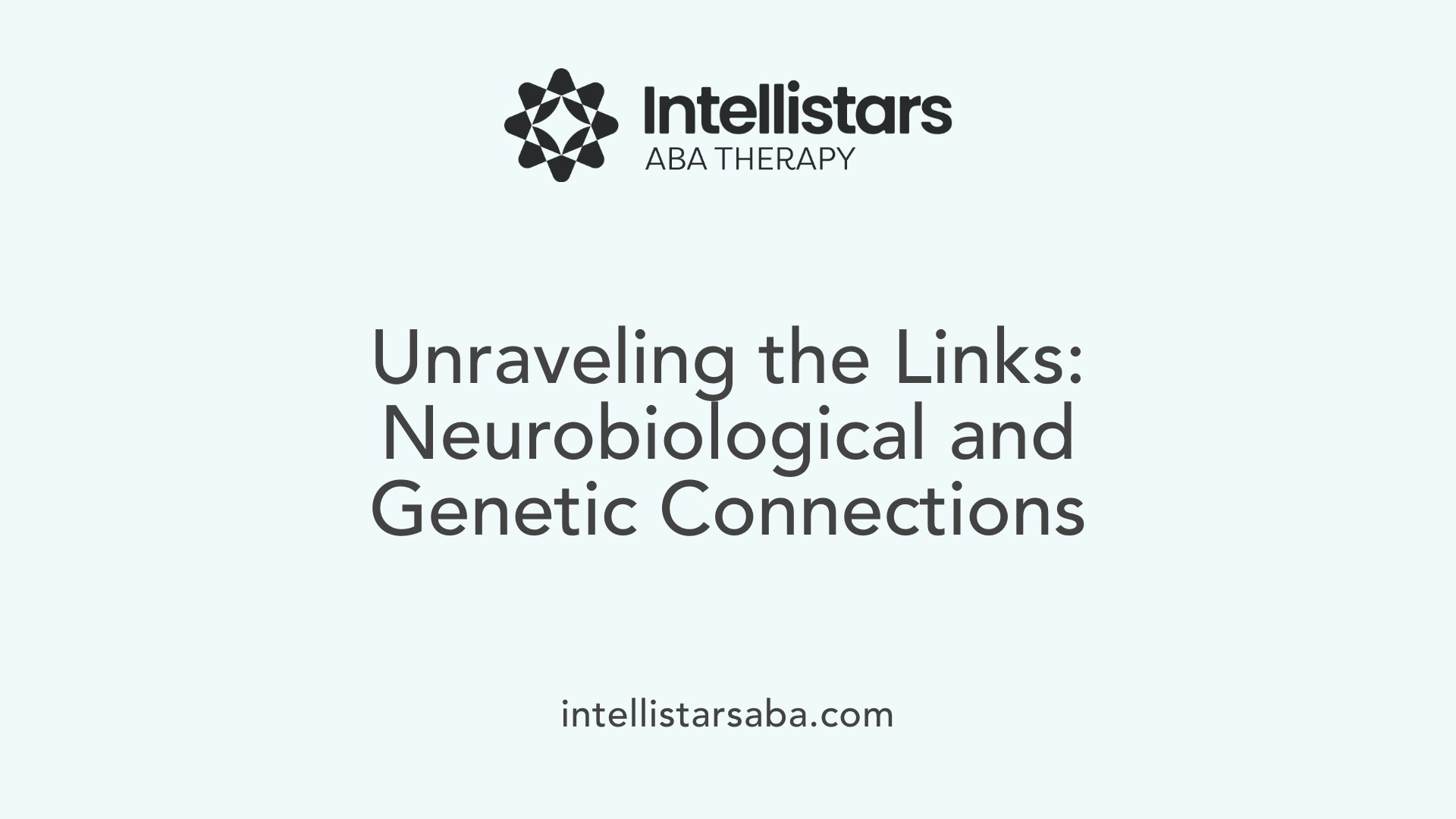
Shared Neural Circuits Such As the Caudate Network
Research into the neurobiology of both autism spectrum disorder (ASD) and obsessive-compulsive disorder (OCD) reveals that these conditions share involvement of similar brain circuits. Notably, the caudate network—a part of the basal ganglia—is linked to compulsive and stereotyped behaviors present in both disorders. Dysregulation in this circuit may contribute to the repetitive behaviors and rigid routines observed.
Genetic Influences and Specific Chromosomal Regions
Family and twin studies highlight strong genetic components in both ASD and obsessive-compulsive behaviors (OCB), with heritability estimates ranging from 62% to 76%. Genetic research has identified several chromosomal areas associated with these disorders, particularly regions 7q, 15q11–13, and 17q. Structural variants, such as microduplications or deletions in 15q11–13, have also been related to ASD and obsessive-compulsive traits like hoarding and routines.
Role of Serotonergic and Glutamate-Related Genes
Candidate gene studies point to the significance of neurotransmitter systems. Serotonergic genes such as SERT/SLC6A4 and glutamate transporter gene SLC1A1 appear to influence both ASD and OCD phenotypes. These genes may underlie the neurochemical pathways that drive repetitive thoughts and behaviors, suggesting overlapping biological mechanisms.
Animal Models Providing Insight
Animal models advance understanding of these disorders’ neurobiological underpinnings. For example, Sapap3 knockout mice exhibit stereotypic grooming behaviors mimicking human OCD compulsions. Such models shed light on how genetic mutations disrupt neural circuits to produce repetitive and compulsive behaviors seen in ASD and OCD.
These neurobiological and genetic investigations are crucial for refining understanding of ASD-OCD overlap and guiding tailored therapeutic strategies that address both conditions.
Co-Occurrence of OCD and Autism and Its Clinical Implications
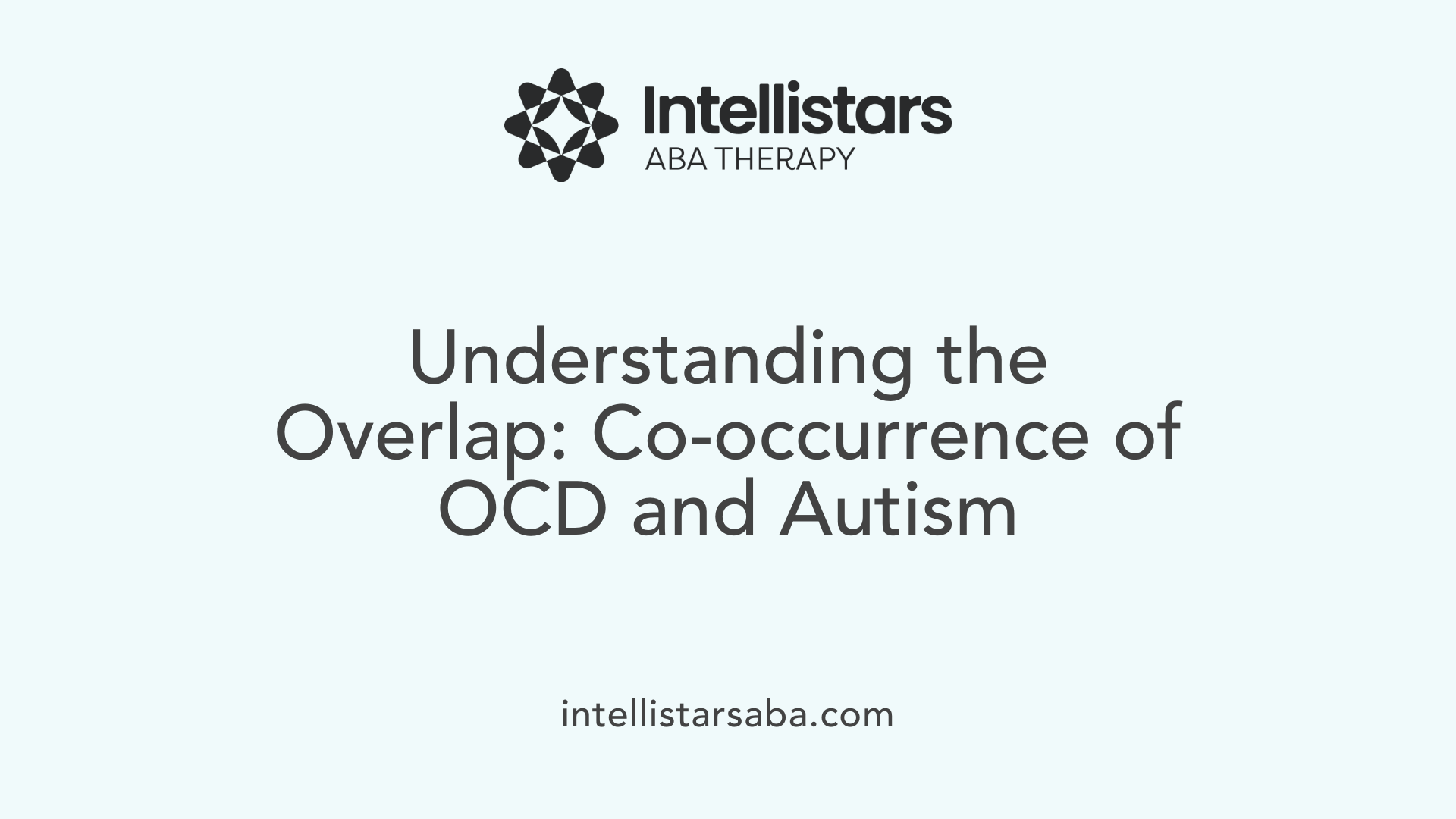
Rates of Comorbidity
There is a notable overlap between Obsessive-Compulsive Disorder (OCD) and Autism Spectrum Disorder (ASD). Studies estimate that between 6% and 36% of individuals with autism also meet the criteria for OCD. Conversely, approximately 25% of youths diagnosed with OCD have been found to also have ASD, highlighting a significant rate of co-occurrence. This overlap underscores the importance of recognizing the shared and distinct features of both conditions in clinical practice.
Complications in Diagnosis and Treatment
The clinical presentation of OCD and ASD can be quite similar, with both disorders featuring repetitive behaviors, intrusive thoughts, and social interaction difficulties. However, the underlying causes of these symptoms differ; in autism, repetitive behaviors often function as self-soothing mechanisms or relate to particular interests, while in OCD they are compulsions aimed at reducing anxiety. This symptom overlap can lead to misdiagnosis or delayed diagnosis, complicating treatment decisions. For instance, OCD is primarily treated with cognitive behavioral therapy (CBT), exposure and response prevention (ERP), and sometimes medications like selective serotonin reuptake inhibitors (SSRIs). In contrast, autism interventions focus on social skills training, behavioral therapies, and developmental supports.
Importance of Comprehensive Assessments
Due to the overlapping symptoms and high rate of co-occurrence, comprehensive and early assessments by healthcare professionals are critical. Differentiating between OCD and ASD involves understanding the motivation behind repetitive behaviors, the nature of intrusive thoughts, and social difficulties. Standardized screening tools and behavioral evaluations improve diagnostic accuracy. Detecting co-occurring OCD in individuals with autism or vice versa allows for tailored treatment approaches, such as adapted CBT with visual supports and family involvement, enhancing therapeutic outcomes. Early intervention is especially beneficial in promoting resilience and coping skills in youth affected by both conditions.
Therapies Focusing on Autism and Behavioral Analysis
What is a therapy that focuses on autism and behavioral analysis?
Applied Behavior Analysis (ABA) is a well-established therapy that focuses on autism through behavioral analysis principles. ABA is a scientific, evidence-based approach designed to understand and change behaviors by applying strategies such as reinforcement, prompting, modeling, and behavior chaining.
This therapy targets increasing socially important skills including communication, social interaction, and daily living skills, while simultaneously aiming to reduce problematic behaviors. ABA therapy is tailored individually to each person and is supervised by trained professionals, typically a Board Certified Behavior Analyst (BCBA).
Principles and techniques of ABA
The core techniques used in ABA include:
- Positive reinforcement: Rewarding desired behaviors to encourage their recurrence.
- Prompting: Providing cues to initiate a behavior, gradually faded over time.
- Modeling: Demonstrating behaviors for the learner to imitate.
- Behavior chaining: Breaking complex behaviors into smaller steps taught sequentially.
- Data collection: Systematic tracking of progress to adjust interventions.
These principles ensure a structured and measurable way to promote adaptive skills and decrease behaviors that interfere with everyday functioning.
Effectiveness and early intervention importance
ABA is widely recognized as an effective intervention for individuals with autism. Research shows that early and intensive ABA therapy—often started in toddlerhood or preschool—yields significant improvements in communication, social skills, and adaptive functioning.
Early intervention is vital because young children’s brains exhibit greater plasticity, making them more responsive to behavioral teaching. The intensity and consistency of ABA therapy, usually involving multiple hours per week, correlate with better long-term outcomes.
Parents and caregivers are often encouraged to participate in ABA sessions to reinforce therapeutic strategies at home, thus supporting generalization of skills across settings.
Who Provides Autism and Behavioral Analysis Therapy?
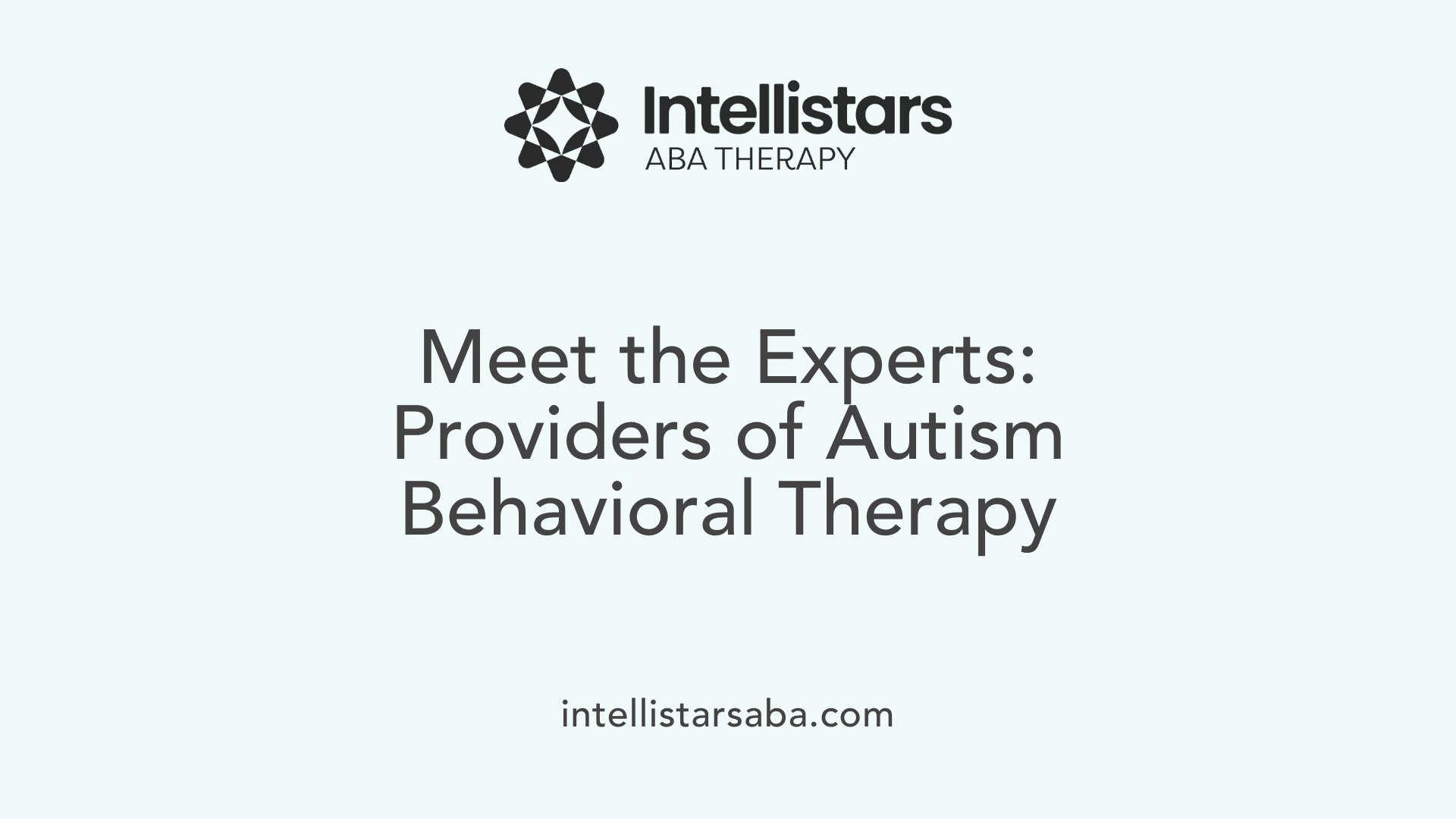
Who provides therapy focusing on autism and behavioral analysis?
Therapies concentrating on autism and behavioral analysis are predominantly delivered by professionals trained in applied behavior analysis (ABA). Key certifications include Board Certified Behavior Analysts (BCBAs) and Certified Autism Specialists (CAS), who possess specialized knowledge and skills to tailor individualized treatment plans.
Professional qualifications and certifications
These professionals typically have backgrounds in psychology, education, speech therapy, or occupational therapy. To ensure quality and consistency, they undergo rigorous educational requirements and pass certification exams overseen by credentialing bodies such as the Behavior Analyst Certification Board. Holding a BCBA or CAS credential indicates advanced expertise in autism-specific interventions and evidence-based behavioral strategies.
Roles of Board Certified Behavior Analysts (BCBAs) and Certified Autism Specialists (CAS)
BCBAs design and supervise ABA therapies, conduct assessments, and create measurable goals to enhance communication, social skills, and behavior in autistic individuals. CAS professionals often bring a holistic perspective, integrating multidisciplinary understanding and focusing on empowering families and individuals through tailored therapeutic approaches.
Settings where therapy is delivered
Behavioral therapies for autism are provided across various environments. These include outpatient clinics, schools, hospitals, and private practices, offering flexibility to meet the needs of individuals in settings where they spend the most time.
Interdisciplinary teams and parental involvement
Effective autism therapy frequently involves interdisciplinary teams, which may include speech therapists, occupational therapists, psychologists, and educators, coordinated under behavior analysts' guidance. Parental involvement is emphasized to reinforce therapy strategies at home, ensuring continuity and maximizing progress.
Differentiated Therapy Approaches for OCD and Autism
Cognitive Behavioral Therapy (CBT) and Exposure and Response Prevention (ERP) for OCD
OCD treatment primarily involves cognitive behavioral therapy (CBT), especially the specialized form known as exposure and response prevention (ERP). ERP helps teens confront anxiety-inducing stimuli without engaging in compulsive rituals, enabling them to reduce their distress over time.
Role of SSRIs in OCD Treatment
Medication also plays an important role, with selective serotonin reuptake inhibitors (SSRIs) commonly prescribed to manage OCD symptoms by modulating serotonin levels in the brain.
Social Skills Training and Sensory Integration Therapy in Autism
Autism therapies focus differently, with social skills training helping individuals navigate social interaction challenges and sensory integration therapy addressing sensory processing differences. These approaches aim to build communication and coping skills tailored to each person’s unique needs.
Use of Wraparound Services and Academic Accommodations
Wraparound services offer coordinated support across home, school, and community settings for autistic individuals, while academic accommodations ensure better learning experiences through tailored educational modifications.
Parental Reinforcement of Techniques
Parental involvement is encouraged in both conditions, reinforcing therapeutic strategies at home to maximize progress and support development.
These distinct therapy approaches reflect the differing underlying causes and behaviors across OCD and autism, highlighting the importance of accurate diagnosis and personalized treatment plans.
Treatment Adaptations for Co-Occurring OCD and Autism
Modified CBT and ERP Techniques
For individuals diagnosed with both autism spectrum disorder (ASD) and obsessive-compulsive disorder (OCD), cognitive-behavioral therapy (CBT) and exposure and response prevention (ERP) require careful adaptation. These therapies are tailored to address both the anxiety-driven compulsions of OCD and the unique challenges posed by autism. Modifications often include slowing the pace of therapy and customizing techniques to accommodate sensory sensitivities and communication styles common in ASD.
Visual Supports and Structured Materials
Visual supports such as schedules, charts, and step-by-step guides enhance understanding and engagement during therapy sessions. Structured materials provide predictability and help individuals with ASD navigate the therapeutic process more comfortably. These tools also increase accessibility by making abstract concepts more concrete, which is beneficial for coping with both repetitive behaviors and intrusive thoughts.
Focus on Resilience and Coping Skills
Treatment places strong emphasis on building resilience, emotional regulation, and adaptive coping strategies. These skills empower youths to manage anxiety and uncertainty, which are prominent features of both OCD and ASD. Therapists work to help clients better tolerate change and develop flexibility within routine, reducing distress related to compulsions and repetitive behaviors.
Importance of Family Involvement
Family plays a crucial role in the success of therapy for co-occurring OCD and autism. Involving parents and caregivers in treatment ensures therapeutic strategies are reinforced consistently at home and school. Family members also help monitor progress, encourage skill practice, and offer emotional support, creating a cohesive environment that fosters long-term improvement.
Future Directions: Genetic Research and Phenotypes for Better Treatments
Advanced Genomic Technologies Enhancing ASD and OCD Research
Recent progress in genetic research leverages advanced genomic technologies like genome-wide association studies (GWAS) and copy number variation (CNV) analysis. These tools allow scientists to scan the entire genome for small genetic variations and larger structural changes such as microduplications or deletions implicated in Autism Spectrum Disorder (ASD) and Obsessive-Compulsive Disorder (OCD). This approach helps identify genetic markers and regions—such as 7q, 15q11–13, and 17q—that correlate with obsessive-compulsive behaviors (OCB), enhancing understanding of the complex polygenic architecture of these conditions.
Refining Behavioral Phenotypes and Endophenotypes
To improve diagnosis and tailor treatments, researchers focus on refining behavioral phenotypes and endophenotypes—more specific, measurable traits associated with ASD and OCD. Utilizing standardized tools like the Autism Diagnostic Interview-Revised and the Repetitive Behavior Scale—Revised enables identification of symptom subcomponents, such as distinct types of repetitive behaviours and obsessions. Recognizing these detailed behavioral patterns aids in distinguishing overlapping traits and targeting interventions effectively.
Role of Neuropsychological Testing and Brain Imaging
Neuropsychological assessments and brain imaging play a critical role in exploring the neural circuits shared by ASD and OCD, notably the caudate nucleus network involved in compulsive and stereotyped behaviors. Investigating unaffected relatives through these methods helps uncover inherited cognitive and neural markers (endophenotypes), which provide insights into the biological basis of repetitive behaviors. This information supports the development of more precise diagnostic criteria and facilitates early identification.
Potential for Targeted Therapies Based on Genetic Insights
Unraveling the genetic underpinnings paves the way for therapies specifically tailored to individual profiles. For example, identifying serotonergic and glutamatergic gene involvement suggests potential pharmacological targets. Additionally, insights from animal models like Sapap3 knockout mice help in understanding neurobiological mechanisms of compulsions. Combining genetic data with behavioral phenotyping enables the adaptation of cognitive-behavioral therapies, such as modified exposure and response prevention (ERP), incorporating visual supports and family involvement to improve outcomes for those with co-occurring ASD and OCD.
The integration of cutting-edge genetics, neuropsychology, and personalized behavioral approaches promises to transform care for individuals affected by these overlapping neurodevelopmental and mental health disorders.
Conclusion: Navigating Complexities for Better Outcomes
While OCD and autism spectrum disorder share overlapping symptoms, their distinct causes and motivations require careful, detailed assessment to ensure accurate diagnosis and effective treatment. Awareness of their differences and the implications of co-occurrence allows clinicians and families to tailor therapy approaches appropriately. Advances in genetics and neurobiology promise refined diagnostic tools and innovative interventions, offering hope for improved outcomes. Early, specialized therapy, such as Applied Behavior Analysis for autism and cognitive-behavioral therapy for OCD, coupled with family involvement, remains crucial in supporting affected individuals toward greater quality of life.
References
- OCD and Autism: Similarities and Differences
- Autism and OCD: Similarities and Differences
- Autism Spectrum and Obsessive–Compulsive Disorders
- Obsessive Compulsive Disorder vs Autism: How to Tell the ...
- OCD vs. Autism: Similarities and differences
- Applied Behavior Analysis (ABA)
- The 7 Dimensions & Core Principles of ABA






